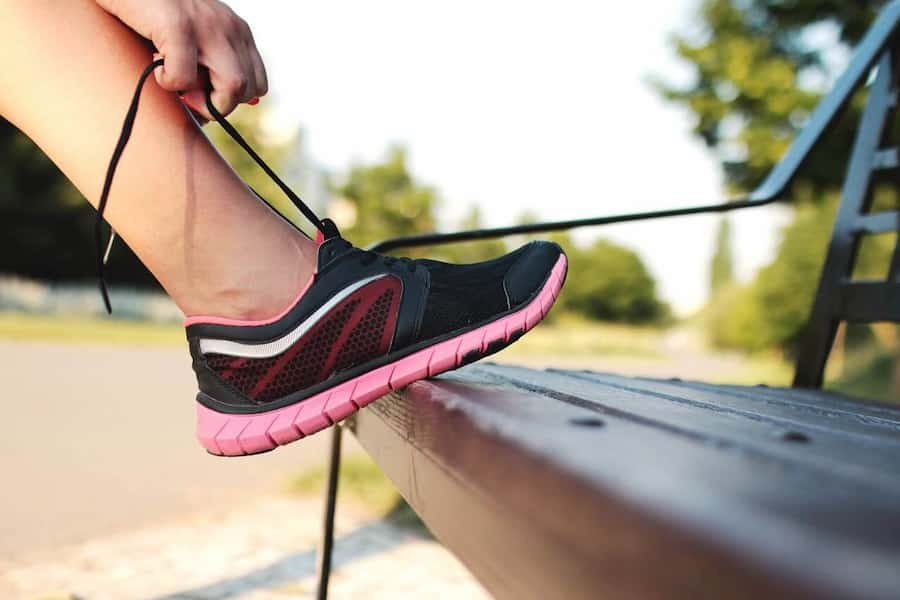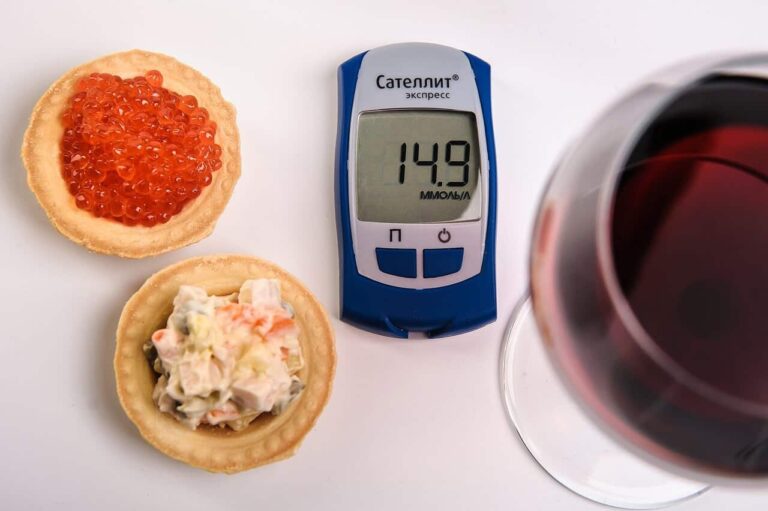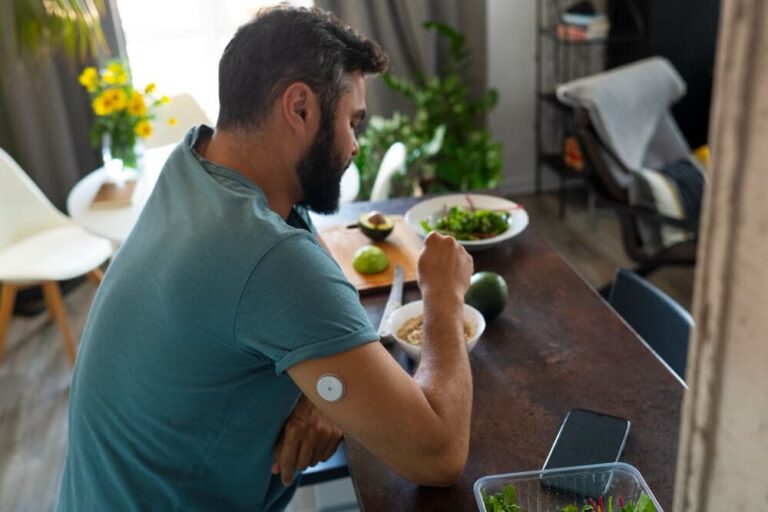Type 1 Diabetes and Exercise
Let’s be honest. For those of us with Type 1 Diabetes, the relationship with exercise is… complicated. It’s like that one friend who is incredibly fun but also completely unpredictable and occasionally leaves you shaky and desperate for sugar in the middle of the night. One day, a 30-minute jog gives you a perfectly flat CGM line, and you feel like a god of metabolic health. The next day, the exact same run sends you into a nosedive so fast you’re pretty sure you broke the sound barrier.
You love the endorphins, the strength, the feeling of reclaiming a piece of your body. But you dread the frantic juice box chugging, the blaring CGM alarms, and the mental gymnastics required just to go for a simple walk. This constant push-and-pull often leads to the one question we all ask: “Is it even worth it?”
The answer is a resounding, earth-shattering YES.
But it requires a new playbook. Forget everything you think you know about “just moving more.” We’re not playing that game. We’re playing 4D chess with a mischievous pancreas impersonator. So, grab your glucose tabs, and let’s turn that chaos into a choreographed dance. This is your survival guide to fitness without the fails.
The Great Fitness Paradox: Why We Fear the Thing That Helps Us
Before we dive into the “how,” let’s validate the “why it’s so damn hard.” The fear is real, and it’s not in your head.
- The Hypo Terror: This is the big one. The fear of a sudden, debilitating low blood sugar in the middle of a run, a swim, or under a heavy barbell is enough to keep anyone on the couch. It’s not just inconvenient; it can be dangerous.
- The Rebound High Frustration: You crushed your workout, felt amazing, and then… your blood sugar skyrockets to the moon. This anaerobic spike feels like a betrayal. You did the “healthy thing,” and your body rewarded you with a number that screams “FAIL.”
- The Data Overload: “Okay, I have to check my sugar, calculate my active insulin, consider the fat and protein from my last meal, factor in the humidity, and align it with the current phase of the moon…” It’s exhausting before you’ve even tied your shoes.
Acknowledging these hurdles is step one. You’re not lazy or unmotivated. You are a vigilant risk manager for a body that lost its instruction manual. Now, let’s learn how to rewrite it.
The Science, But Make It Fun: A T1D’s Guide to Movement
Understanding what’s happening under the hood is your superpower. Exercise isn’t a single entity; it’s a spectrum. Different movements send different signals to your body.
Aerobic Exercise: The “Slow Burn” Marathon
(Examples: Walking, light jogging, cycling, swimming)
Think of this as the calm, steady friend. During aerobic exercise, your muscles start sipping glucose from your bloodstream for sustained energy. This generally leads to a gradual, predictable drop in blood sugar. It’s fantastic for improving your insulin sensitivity, meaning the insulin you do take works more efficiently. For many, this is the safest and most predictable entry point into fitness.
Anaerobic Exercise: The “Adrenaline Rush” Sprint
(Examples: Heavy weightlifting, sprinting, HIIT, CrossFit)
This is the wild card. Intense, explosive movements put your body under “good” stress. Your body, not knowing the difference between lifting a heavy weight and running from a lion, screams, “EMERGENCY!” It floods your system with hormones like adrenaline and cortisol, which tell your liver to dump stored glucose into your bloodstream for a quick energy burst.
The result? A temporary, and sometimes dramatic, rise in blood sugar. This is the part that drives us crazy. But wait, there’s a twist! Hours later, as your muscles work to repair and refuel, they can start pulling in glucose, leading to a delayed drop. It’s the classic T1D “spike-then-crash” rollercoaster.
Mixed Workouts: The “Hybrid Hero”
(Examples: Team sports like basketball, a workout class with cardio and weights)
This can be a sweet spot. By combining aerobic and anaerobic elements, you can sometimes find that the effects balance each other out. The initial spike from the intense bits might be blunted by the steady glucose use from the cardio. It’s still a puzzle, but often a more stable one.
Here’s a quick-glance table to save on your phone:
| Exercise Type | Primary Action | Typical BG Effect (During) | Potential BG Effect (After) |
| Aerobic | Muscles sip glucose steadily | 📉 Gradual Drop | ✅ Usually Stable |
| Anaerobic | Adrenaline dumps glucose | 📈 Temporary Spike | 📉 Delayed Drop (High Risk) |
| Mixed | Combination of both | ↔️ Potentially More Stable | 📉 Moderate Drop Risk |
The Takeaway: No exercise is “bad.” They’re just different. Your job isn’t to avoid them; it’s to become a scientist of your own body and plan for the predictable patterns.
Your Pre-Flight Checklist: The Art of the Workout Game Plan
Spontaneity is great, but in the world of T1D fitness, preparation is king. A successful workout begins up to an hour before you even start moving.
Step 1: Know Your Starting Line (The BG Check)
This is non-negotiable. Where you start determines your entire strategy.
- Below 100 mg/dL (5.5 mmol/L): Your engine is low on fuel before you even leave the driveway. ACTION: Consume 15-30g of fast-acting carbs (like a juice box or 4 glucose tabs). Wait 15 minutes, recheck, and don’t start until you’re safely above 100.
- Between 100-250 mg/dL (5.5-13.9 mmol/L): This is generally the green zone. You’re likely good to go, but the rest of your plan still matters.
- Above 250 mg/dL (13.9 mmol/L): This is a caution zone. ACTION: Check for ketones.
- No/Trace Ketones: You can likely proceed with caution, but an intense workout might push you higher before bringing you down. Hydration is key. A light aerobic workout might be a better choice.
- Moderate/Large Ketones: STOP. NO WORKOUT. Exercising with high blood sugar and ketones is like trying to put out a fire with gasoline. It can accelerate Diabetic Ketoacidosis (DKA). Correct the high, hydrate, and wait until both your BG and ketones are in a safe range. Learn more about DKA from the [ADA]
Step 2: Tame the Insulin (Your Secret Weapon)
You wouldn’t head into a long meeting with a full bladder, so don’t head into a workout with a full load of active insulin (Insulin on Board – IOB).
- Pump Users: The temporary basal rate is your best friend. For most aerobic workouts, setting a temp basal of 50-70% reduction for 1-2 hours before you start can prevent a drop.
- Pen/MDI Users: This is trickier. If you’re exercising within 1-2 hours of a meal bolus, consider reducing that bolus by 25-50%, depending on the intensity and duration of your planned activity.
- The “Naked” Snack: A very common strategy is to eat a small, carb-containing snack (15-20g) before the workout without bolusing for it. This gives you a buffer to burn off.
Step 3: Fuel for Success (Strategic Snacking)
For workouts lasting more than 45-60 minutes, a pre-workout snack is a smart move. The magic combo is a mix of fast-acting and slow-acting carbs.
- The Fast Carbs (e.g., a banana, a few dates) give you upfront energy.
- The Slow Carbs/Protein/Fat (e.g., peanut butter, a slice of cheese, a handful of nuts) provide sustained energy and help prevent a crash later on.
- Winning Combos: A banana with a spoonful of peanut butter; a slice of whole-wheat toast with avocado; a small apple with a cheese stick.
Mission Control: How to Navigate the Workout Itself
You’ve prepped, you’re fueled, you’re moving. Now what?
- Be Your Own Co-Pilot: If you have a CGM, this is its time to shine. Glance at it, watch for trend arrows, and set your alerts. A “Low Predicted” alert is far more useful than a “You Are Now Low” alert. No CGM? No problem. For longer sessions, a quick finger stick every 30 minutes keeps you in the loop.
- Your Pit Crew is Your Pocket: Never exercise without fast-acting sugar on your person. Not in your gym bag, not in the car. In your pocket. Glucose gels, tabs, gummies, a small juice box—whatever works for you. 15g is the standard dose to treat a low.
- Hydration is Not a Suggestion: Dehydration concentrates your blood glucose, making it look higher than it is, and can also mess with insulin absorption. Water is the unsung hero of blood sugar management. Drink it.
The Post-Workout Betrayal: Taming the Delayed Hypo
You finished. You feel like a champion. You go to bed with a perfect 120 mg/dL. And then, at 2 a.m., the dreaded hypo alarm blares. What happened?
Your muscles are hungry! For up to 24 hours after a workout, your body is working to replenish its glycogen (stored glucose) stores. It does this by becoming extra sensitive to insulin and pulling more glucose from your blood.
How to fight back:
- The Post-Workout Snack: A snack with carbs and protein within an hour of finishing can help start the refueling process.
- The Dinner Bolus Reduction: If you had an intense afternoon workout, consider slightly reducing your dinner bolus.
- The Bedtime Basal Adjustment: For pump users, a reduced overnight temp basal (e.g., 80% of normal) can be a lifesaver. For MDI users, a small, protein-rich bedtime snack (like a cheese stick or Greek yogurt) can provide a slow-and-steady glucose release overnight.
Final Thoughts: It’s a Dance, Not a Fight
Exercising with Type 1 Diabetes will always be a dynamic process. Some days, the steps will feel effortless. Other days, you’ll trip over your own feet. And that is completely okay.
Drop the goal of perfection and pick up the goal of participation. Every workout, “good” or “bad,” is a piece of data. It’s a clue. It’s you learning the unique rhythm of your own body.
You’re not just managing a condition. You are building resilience, strength, and a profound connection to your body that most people will never know. You’re not just exercising; you’re playing life on Expert Mode and winning every time you choose to show up.
Now go lace up those sneakers. You’ve got this.











